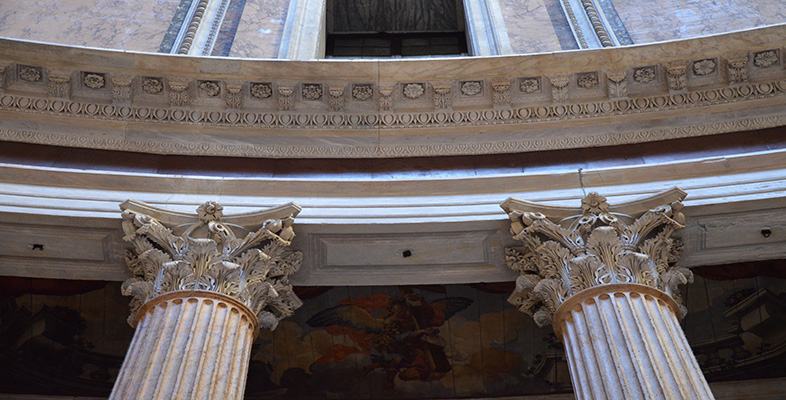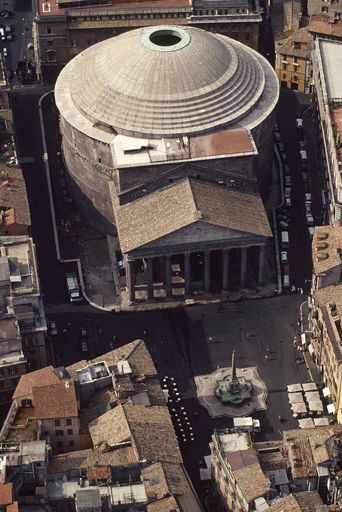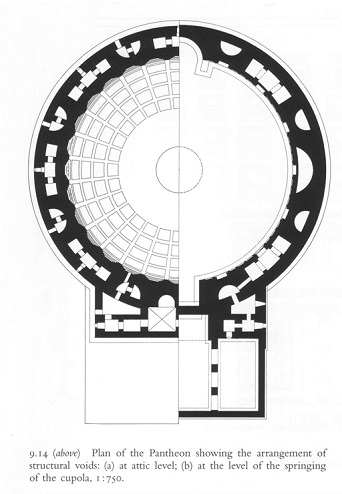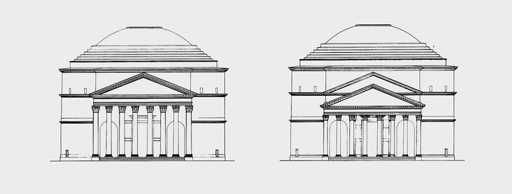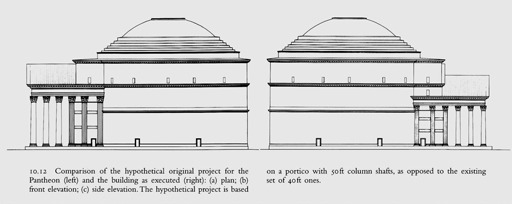2.1 Introducing the Pantheon
Some of the monuments associated with Hadrian pre-date him, while others belong to a later period, and most were restored by multiple emperors. The most iconic of these monuments is the Pantheon (Figure 2).
The Pantheon survives due to its novel architectural design and because it was transformed into the Church of St Mary of the Martyrs in 608 CE. You might assume that such a well-preserved building is well understood, but the Pantheon illustrates the point that while many of Rome’s ancient monuments survive – in this case, almost intact – there is much we don’t know about their construction, chronology, meaning and purpose.
Activity 4
Listen to the audio recording ‘The Pantheon’, in which Mark Wilson Jones discusses the disputed aspects of the Pantheon: its date, phasing and design coherence, and look at the accompanying images.
As you listen to the audio recording, make some notes in answer to the following questions:
- What do we still not know about the Pantheon? Does it surprise you that a standing monument such as this one is not fully understood?
- How was the Pantheon constructed? What was novel about its design and construction? How does Wilson Jones explain the architectural incongruities?
- What debates are there about the meaning and purpose of the Pantheon?
Transcript: The Pantheon
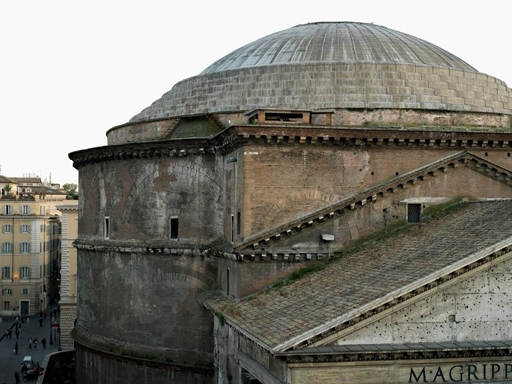
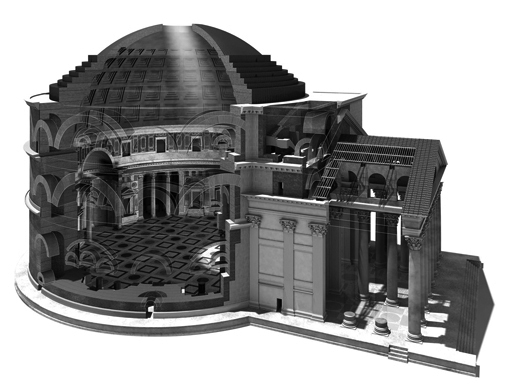
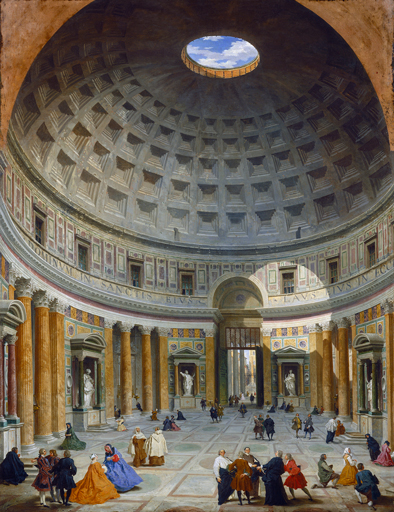
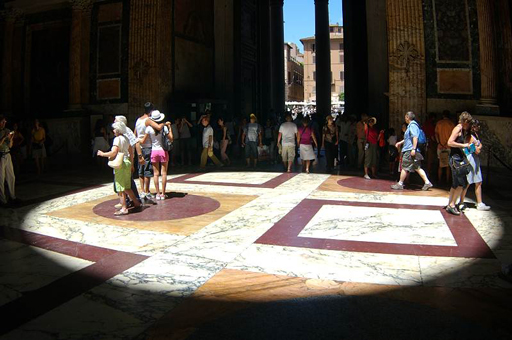
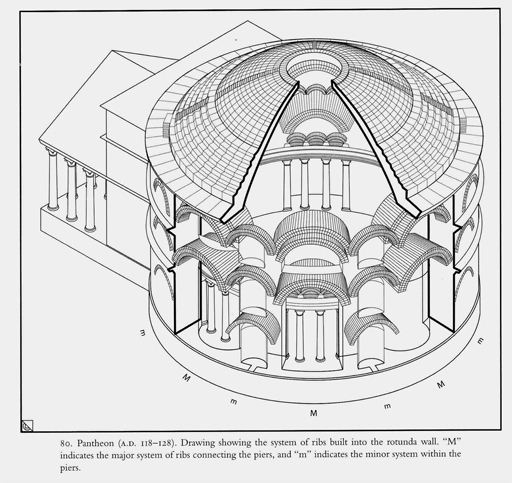
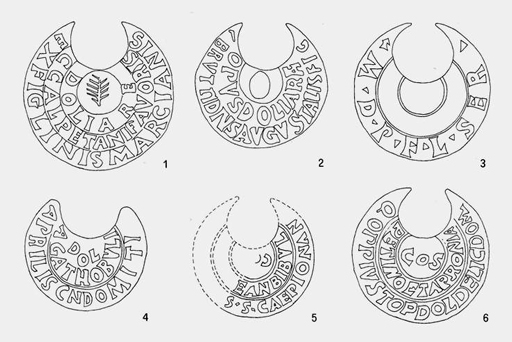
Discussion
- The Pantheon as we see it today has inspired architects for almost the last 2,000 years. It is a well-studied monument, and yet we don’t know what the building was used for, why its structure lacks architectural cohesion, or who designed and built it. The inscription tells us it was built by Agrippa, but brick stamps date it to Trajan and Hadrian. Wilson Jones explains how the material evidence, both architectural and archaeological, has been interpreted and reinterpreted since the nineteenth century. The monument that stands today replaced one which burned down in 110 CE and may be the second or third Pantheon to have been built on the site.
- The Pantheon is often referred to as a temple to all the Roman gods (‘pantheon’ derives from the ancient Greek for ‘all the gods’) and certain features are suggestive of temple architecture, such as the pediment on the portico. But it also has unusual features, such as the unsupported domed roof with its oculus, which gives a particular perspective not found in other Roman buildings. Wilson Jones also discusses the possibility that the Pantheon may have been planned as a temple to Augustus, and he explores the relationship the building has with the other Augustan monuments in the Campus Martius.
- Debates about the architectural incongruities, phasing, meaning and purpose of the Pantheon continue. How convincing did you find the arguments put forward by Wilson Jones? Perhaps listen again to the recording and note what evidence he uses to construct and support his ideas.
You may have been more convinced by some hypotheses and arguments than by others. There are no right or wrong answers here, as long as your point of view is supported by evidence from the various types of primary sources we have for the Pantheon. If you are interested in pursuing some of the academic arguments presented in the audio recording, you will find suggestions in the list of further reading associated with this course.
